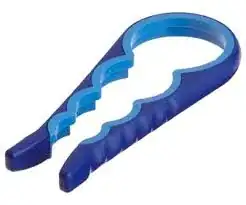When I make a jam, I put it while it's hot into a jar, then close the jar with its lid (a single-piece, screw-on metal lid) and put in cold water. After doing this, I can usually keep the jam outside the refrigerator for months. But, when I try to open the jar, it is very difficult and in many cases I have to use a plyer to fold the lid open.
Is there a way to seal a jam for long-term preservation, such that it can also be opened easily?
EDIT: I just bought a jam at the supermarket. It is canned just like my jams - in a glass jar with a single-piece screw-on metal lid. It can remain on the shelf for months without refrigeration. Opening it is very easy - I just twist the lid slightly and it opens. I don't need to use force or any special tool or technique. The lid remains intact and can be used again. HOW DO THEY DO THIS?
